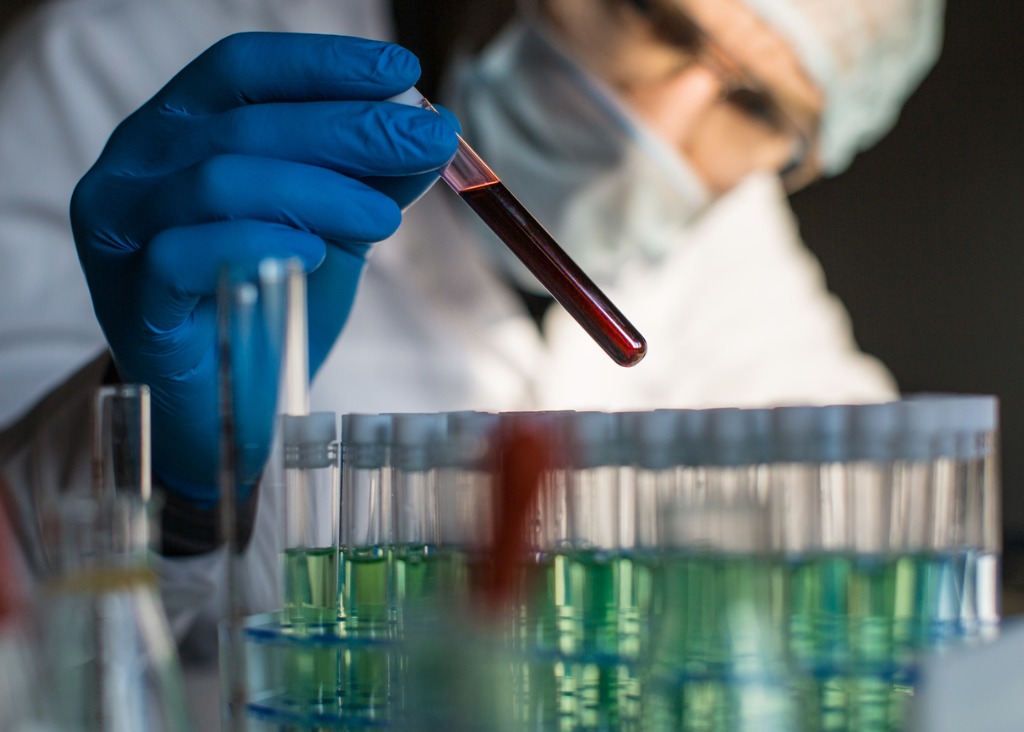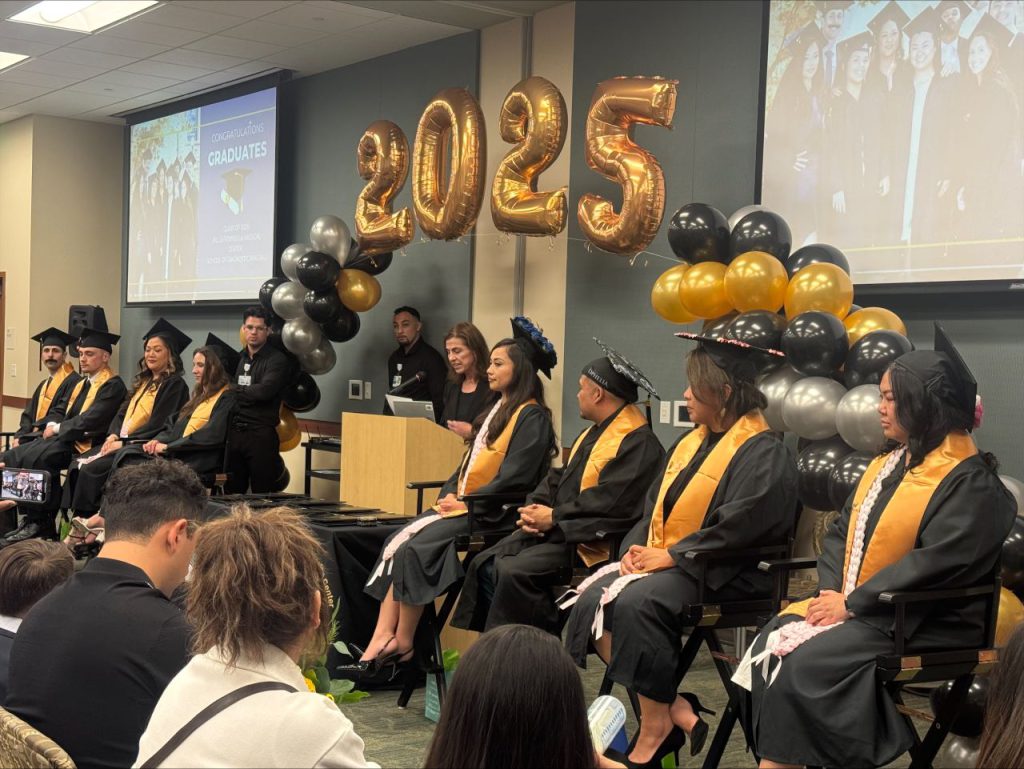Testing is conducted to diagnose, understand and help prevent the spread of SARS-CoV-2/novel coronavirus. We encourage people who test positive for the virus to quarantine and isolate themselves to prevent viral spread to others. This is particularly important with COVID-19, the diseased caused by SARS-CoV-2, because some infected people have no symptoms and may unknowingly infect others.
Follow our Educational Series on testing to learn about polymerase chain reaction (PCR) and serology testing, and stay abreast of the latest updates at Sutter. We feature expert perspectives from Jeffrey Silvers, M.D., Sutter Health’s medical director of infectious diseases. In Part 1 of this series, we describe SARS-CoV-2 testing with PCR.
Overview:
Polymerase chain reaction tests, known as PCR, are the most common and most accurate tests for determining whether someone is currently infected with the SARS-CoV-2/2019 novel coronavirus.
A healthcare provider administers a PCR test by taking a nose or throat swab from a patient, processing the sample in a machine, and then looking for unique genetic materials that indicate the presence of SARS-CoV-2. The test sample is commonly taken from the back of the patient’s throat or nose, generally using a long, thin swab. The swab is stored in a sterile tube and then sent to a lab for testing, where lab testing personnel extract nucleic (genetic) material from the test sample (sometimes called a “specimen”).
The purified genetic material is mixed with other compounds including some derived from the SARS-CoV-2 virus, which are known as “reagents.”
The combined solution is placed in a testing instrument. If a person’s specimen contains SARS-CoV-2, part of the virus’s genetic material will be multiplied several times (amplified) to a high enough level to yield a positive test result—meaning SARS-CoV-2 is detected. The test result is negative, or “not detected,” if the specimen lacks SARS-CoV-2.
As with all lab tests, a number of factors determine the accuracy of a COVID-19 test result. These include not only the instrument and chemical reagents used to perform the test, but also the timing and quality of specimen collection and the biology of the individual patient.
Laboratory tests are characterized by their ability to detect a positive case (sensitivity) and their ability to determine a negative case (specificity). So a sensitive test is less likely to provide a false-negative result and a specific test is less likely to provide a false-positive result.
How accurate are PCR tests?
- Like most laboratory tests, several factors determine the accuracy of a COVID-19 test result. These include the testing instrument and chemical reagents used to perform the test, as well as the timing and quality of specimen collection and the biology of the individual patient. Laboratory tests are characterized by their ability to detect a positive case (sensitivity) and their ability to determine a negative case (specificity). A sensitive test is less likely to provide a false-negative result and a specific test is less likely to provide a false-positive result.
- In general, PCR tests are the most effective diagnostic test to detect SARS-CoV-2 infection. However, a follow-up PCR test is sometimes indicated to confirm a negative result. PCR tests are less reliable in detecting very early infections because several days may pass before the virus starts replicating in a person’s throat and nose. Although PCR tests usually convert to negative with 10 days after first becoming positive, they may remain positive in some patients for up to three to six weeks. It is unknown whether this reflects ongoing potential contagion in these extended carriers.
- The PCR tests are also less reliable with late disease, often starting at about 14 days after initial symptoms, because the virus is no longer replicating and the body is clearing the virus. With optimal sample collection and timing for testing, the PCR test will detect disease in most, but not all, patients with COVID-19.
- Based on limited studies and according to the U.S. Centers for Disease Control and Prevention (CDC), most PCR tests are highly reliable with less than five percent chance of false negatives.
- During the course of the SARS-CoV-2 pandemic, PCR testing has been refined from the initial testing procedures and has been conducted with greater automation to help reduce errors.
Are PCR tests administered at home or in pharmacies effective?
- Rapid point-of-care PCR tests have also recently become available. On April 21, 2020 the U.S. Food and Drug Administration (FDA) approved the first at-home PCR test for COVID-19. The test permits testing of a sample collected from the patient’s nose using a designated self-collection kit that contains nasal swabs and saline. Once patients self-swab to collect their nasal sample, they mail their sample to the specified laboratory for testing.
- The ability to detect COVID-19 disease for home collection depends on closely following the collection instructions and the timing of collection (time point in disease). With optimal sample collection and timing of collection, the ability to detect disease can be similar to collection and testing performed at a healthcare facility.
Testing at Sutter Hospitals:
Sutter Health is following CDC guidelines on testing for SARS-CoV-2 within our hospitals and emergency departments.
As part of Sutter Health’s comprehensive response to the novel coronavirus pandemic, we sourced multiple PCR tests for COVID-19. For the safety of our patients, we continually monitor evidence on newly emerging investigational and approved diagnostic tests, and we run our own performance testing to verify results for effectiveness.
Testing with PCR can produce a positive test result in as little as five minutes, and enables us to perform “close proximity”—conducted on site or nearby—COVID-19 testing for 10 of our hospitals that see the highest volume of patients.
“Close proximity” testing at our busiest hospitals allows us to quickly diagnose and correctly treat our most vulnerable patients, which improves infection-control measures and preserves valuable personal protective equipment (such as masks and gowns) for Sutter’s frontline healthcare workers.
Sutter’s core laboratory in Livermore also supports prompt diagnosis and treatment—delivering COVID-19 test results to our hospitals and outpatient facilities within 24 to 36 hours.
Currently (July 21, 2020), Sutter is performing approximately 2,962 COVID-19 tests daily (seven-day average) on samples collected from Sutter patients and employees, and our Sutter labs have the capacity to meet this demand. Indications for testing continue to expand as more testing supplies become available.
We implemented a process that includes repeat testing with an alternative method, on negative test results that do not “fit” with the patient’s clinical picture and other cases when clinically indicated. This helps eliminate suspicion of negative test results.
We are following test manufacturers’ recommendations for optimal swab collection and test performance. Beginning in April 2020, labs affiliated with Sutter have been performing comparison testing to further optimize test performance.
Respiratory Clinics Outside Sutter Hospitals (Ambulatory Respiratory Clinics):
For patients outside the hospital setting, Sutter offers designated respiratory sites where patients can be evaluated by a clinician to see if they meet the criteria for the COVID-19 test. There are respiratory clinics in the San Francisco Bay Area, and designated urgent care clinics in the Sacramento Valley Area.
If you feel ill, schedule a video visit or call our COVID-19 advice line at 866-961-2889 to receive guidance on whether you need to be further evaluated at a Sutter testing site. Please present identification at the testing site to confirm your appointment.
If you meet the criteria for testing, a specimen will be collected and sent to a lab for analysis. If the result is positive, your clinician will arrange for appropriate care.
Testing Locations (Specimen Collection Sites): There are approximately 24 test collection locations, primarily at urgent care locations throughout Sutter’s Northern California service area.
Patients are asked to call a phone number from their car. Staff then provide guidance and coordinate collecting test samples.
Respiratory Clinics: There are approximately 17 respiratory clinics currently located within medical office buildings, clinics, parking garages or tents:
- Many offer car triage
- Some require an appointment (a doctor’s note is required for all testing)
- All of these locations also offer test collection (a doctor’s note is required for all testing)
The test samples that Sutter collects from non-hospitalized patients who have been tested for SARS-CoV-2 are sent primarily to the Sutter core laboratory in Livermore. Results are usually available in one day.
SARS-CoV-2 Testing for Sutter Healthcare Workers:
Sutter is prioritizing prompt testing of exposed, symptomatic healthcare workers to provide prompt treatment, support family safety and foster their safe return to the front lines of care. Our approach is consistent with CDC guidelines.
Part 2 of this Educational Series on SARS-CoV-2/COVID-19 tests describes antibody/serology tests. Learn more.





